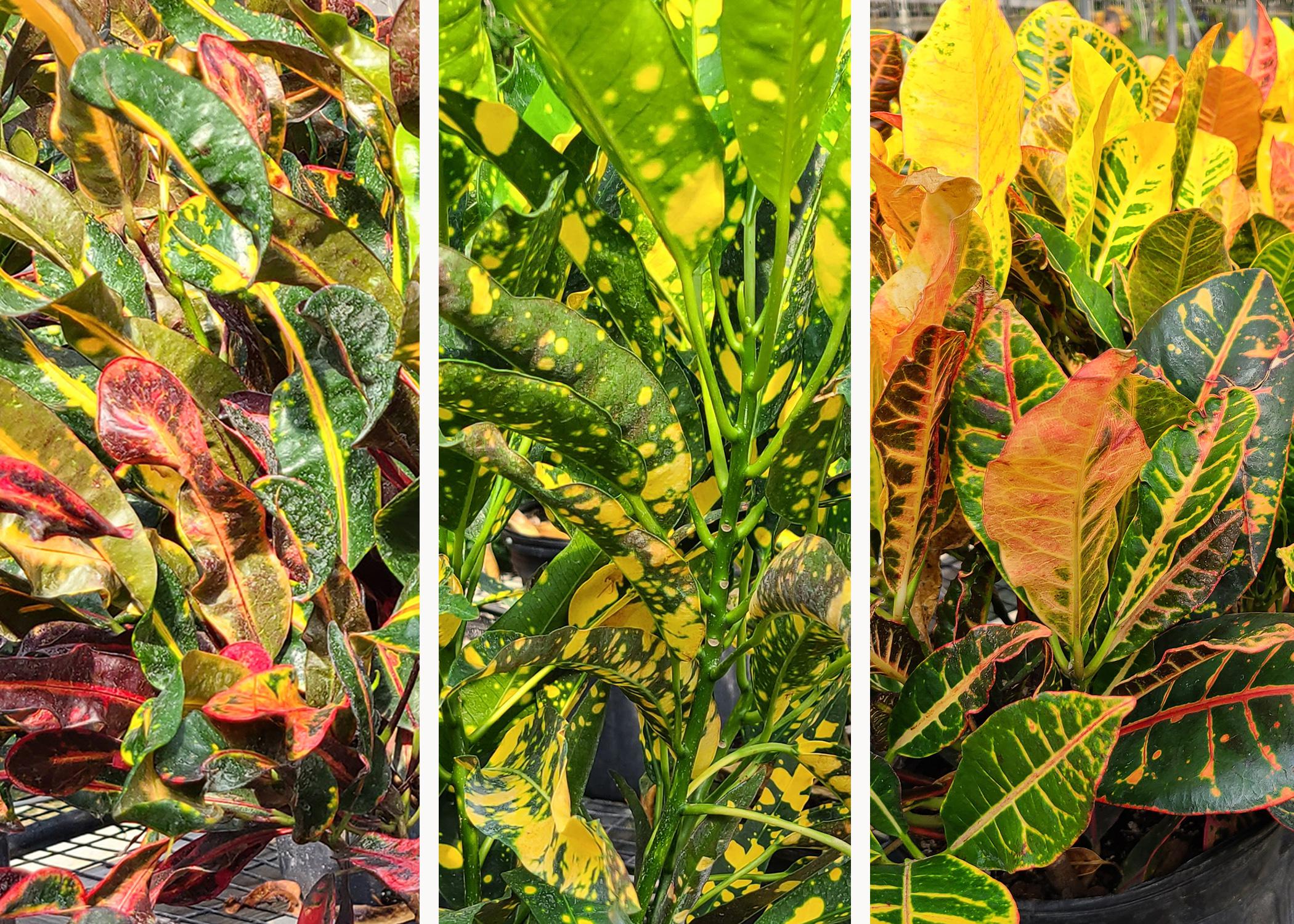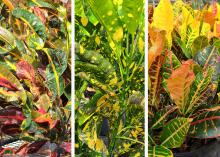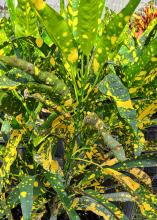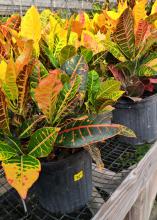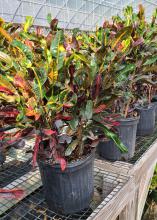Information Possibly Outdated
The information presented on this page was originally released on September 21, 2020. It may not be outdated, but please search our site for more current information. If you plan to quote or reference this information in a publication, please check with the Extension specialist or author before proceeding.
Plant crotons for fall foliage color
What a rollercoaster last week was for Southern Gardening!
My column highlighted the steps gardeners should take ahead of a tropical storm. We cancelled Southern Gardening TV production, as coastal Mississippi was in the crosshairs of Hurricane Sally on Monday and the weather folks were assuring us of a Mississippi landfall.
Then everything changed Tuesday as Sally took a tight righthand turn, and my yard received a grand total of only 1.75 inches of rain. Not that I’m complaining! So let’s get back to gardening.
I’ve always said that you can get some of the biggest landscape impact not by using gaudy flowering plants, but by using colorful foliage. My summertime classic go-to is anything coleus, which by the way, is still looking good as we race headlong into autumn.
My recommendation for today is if you want a great plant for autumn impact, then I highly recommend you get a couple of croton plants.
Crotons are tropical plants with striking foliage that makes them great in the landscape. They love the heat and humidity of our summers, but their tropical nature means crotons don’t like temperatures below 60 degrees. This is no problem in our summer season!
In Mississippi, probably the only gardeners who could realistically grow these in-ground would be the extreme coastal regions. However, crotons make great container plants, and growing them in containers makes it much easier to bring them inside for cold weather protection. And then you can enjoy the great color indoors.
Growing requirements are pretty easy. Grow croton in the full sun, although some afternoon shade is beneficial. Feed with a 20-20-20 water-soluble fertilizer once a month to keep your croton happy. Maintain consistent soil moisture, as the croton plants don’t like to dry out.
There are more than 100 varieties of croton, but we rarely find more than a few in garden centers. Here are a few pretty selections.
Gold Dust croton has beautiful, vibrant green foliage with what looks like random patterns of golden-yellow paint splashed on the leaves.
Petra croton is one of the most common varieties, but it is definitely not ordinary. The large, slightly oval leaves are green with various veining and variegations of bold reds, oranges and yellows.
Mammy croton is gorgeous with its curly strapped-shaped foliage. The foliage coloration in shades of red, green, purple and bright yellow is a little more subdued compared to Petra. As with all croton, the foliage colors are intensified when grown in bright sunshine.
So, when you visit your local, independent garden center next time for fall mums and mari-mums, be sure to pick up a couple of crotons to complete your autumnal decorations.

